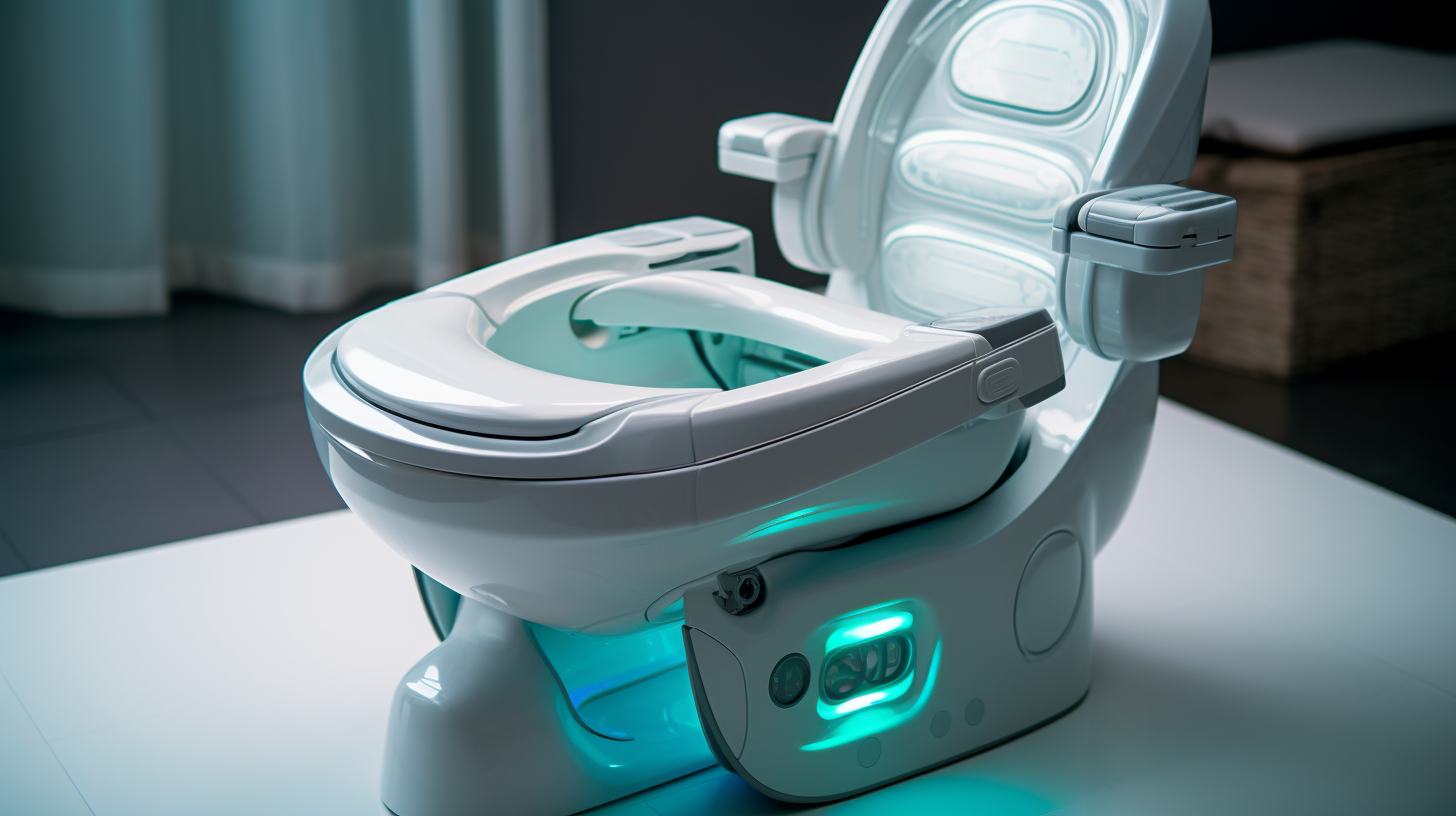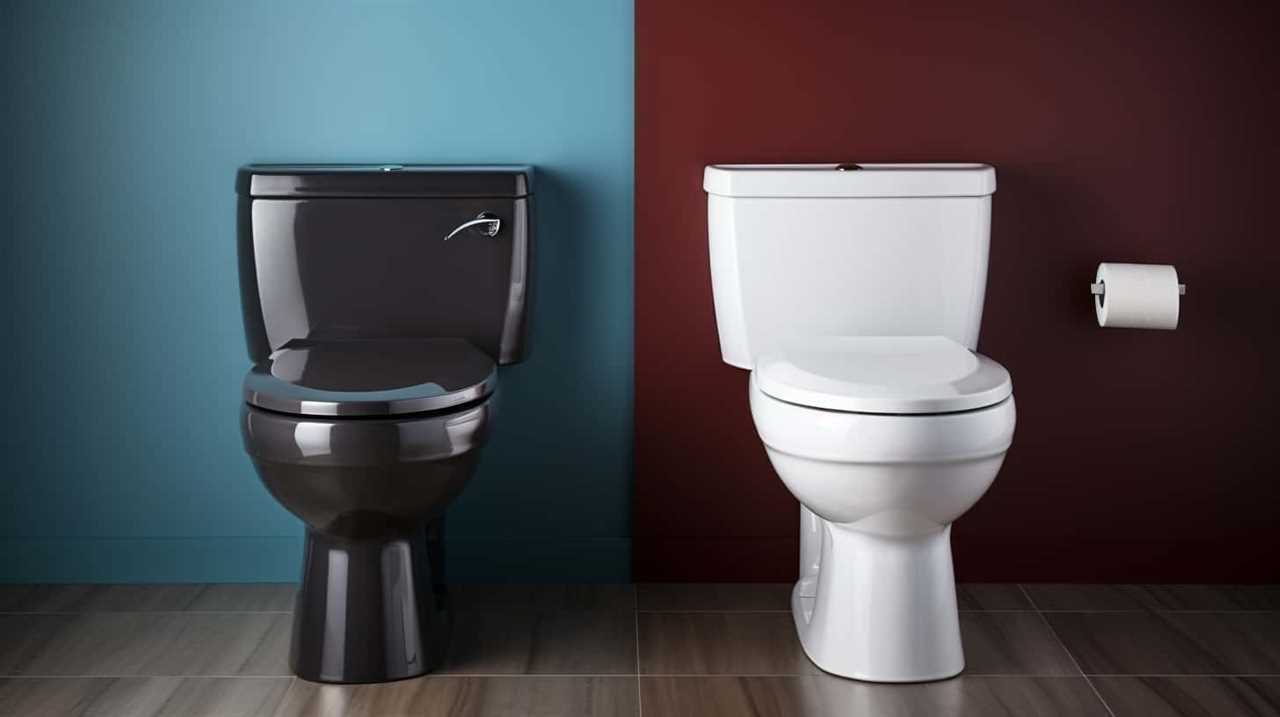Did you know that a clogged toilet is one of the most common household plumbing problems?
Well, fear not! I’m here to help you master the art of unclogging toilets with a trusty tool – the toilet plunger.
In this article, I will guide you through the different types of plungers, how to choose the right one, and provide a step-by-step guide to effectively using it.
Say goodbye to frustrating clogs and hello to a smoothly flowing toilet!
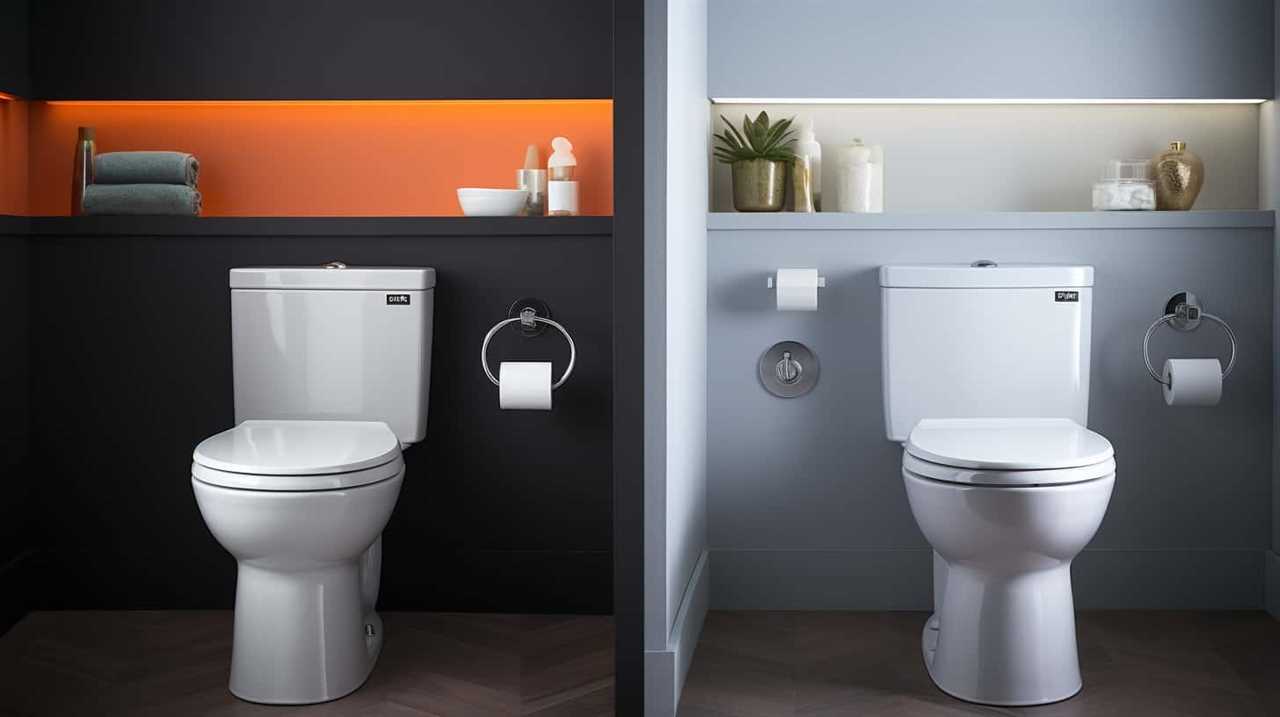
Key Takeaways
- There are three main types of toilet plungers: cup plungers, flange plungers, and accordion plungers.
- Cup plungers are ideal for sinks and tubs, while flange plungers are specifically designed for toilets.
- Choose a plunger that creates a tight seal around the drain for effective plunging.
- Avoid common mistakes such as using too much force, not creating a proper seal, plunging without removing excess water, and using chemicals with the plunger.
Types of Toilet Plungers
In my experience, there are three main types of toilet plungers commonly used for unclogging toilets.
These plungers offer various benefits and are made from different materials.
The first type is the cup plunger, which has a flat bottom with a rubber suction cup attached to a wooden or plastic handle. This plunger is effective for unclogging toilets due to its strong suction power.
The second type is the flange plunger, also known as a toilet plunger. It has an added flange or lip at the bottom of the rubber cup, which creates a better seal around the drain. This type is specifically designed for unclogging toilets and provides optimal suction.
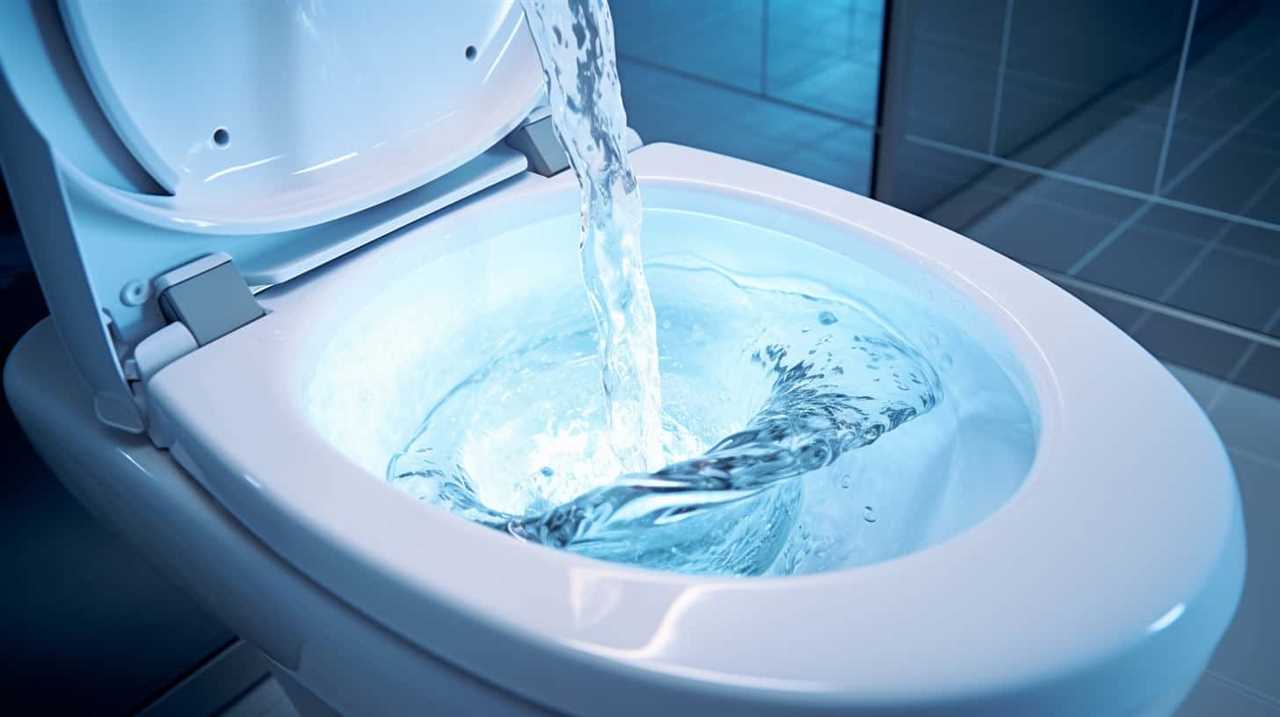
Lastly, the accordion plunger, also called a bellows plunger, features an accordion-shaped rubber cup attached to a handle. This type is ideal for sinks and tubs, but can also be used for toilets. The accordion design allows for increased pressure and force during plunging.
When choosing the right plunger, it’s important to consider the type of clog and the specific needs of the situation.
How to Choose the Right Plunger
When considering how to choose the right plunger, I take into account the type of clog and the specific needs of the situation. Different plunger designs cater to different types of clogs. For instance, a cup plunger with a flat bottom is ideal for unclogging sinks and tubs, while a flange plunger with a fold-out rubber flange is specifically designed for toilets.
It’s important to choose a plunger that creates a tight seal around the drain to maximize effectiveness. Additionally, considering the brand is crucial to ensure quality and durability. Some of the best plunger brands include Simplehuman, OXO, and Korky. These brands offer reliable plungers that are designed to last.
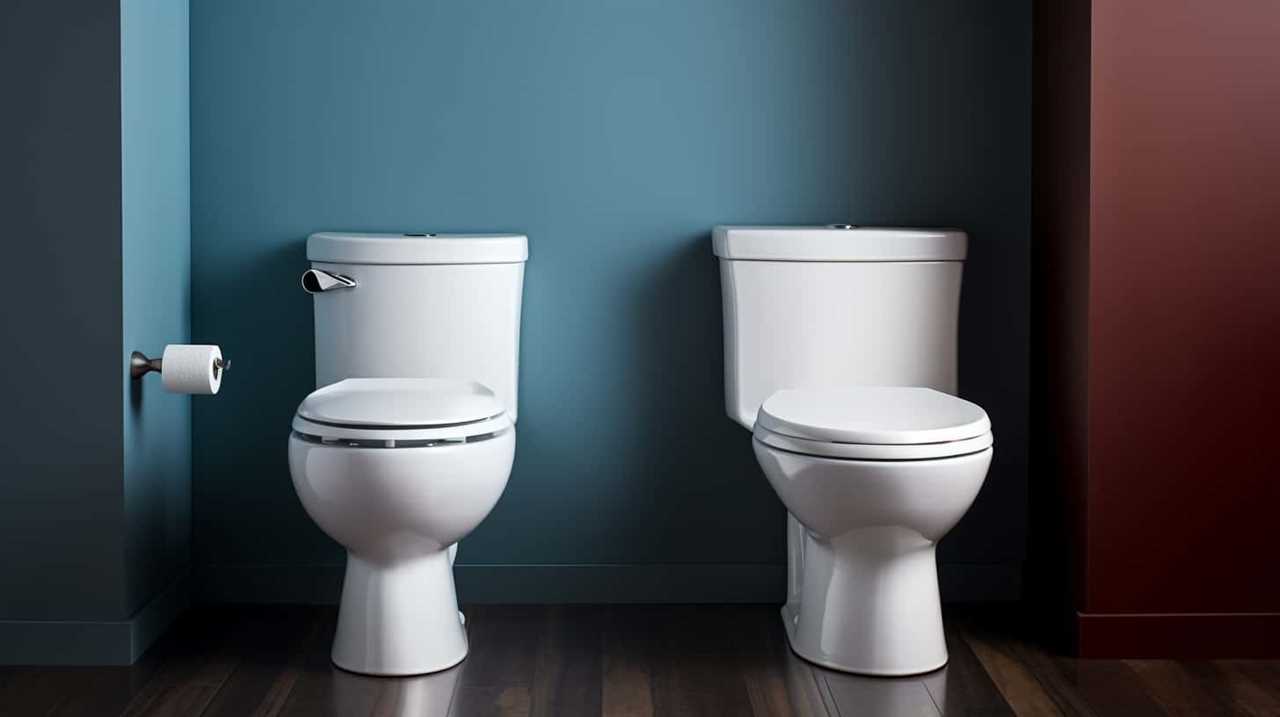
Step-by-Step Guide to Using a Plunger
To effectively unclog a drain, I begin by positioning the plunger over the drain opening, ensuring a tight seal. Here is a step-by-step guide on how to use a plunger:
- Stand near the clogged drain, ensuring you have a clear view and easy access to the plunger.
- Hold the handle firmly with both hands, maintaining a strong grip.
- Place the rubber cup of the plunger directly over the drain, making sure it covers the entire opening.
- Push the plunger down firmly, creating a seal between the cup and the drain.
- Begin plunging vigorously up and down, using your body weight to generate force.
- Continue plunging for several minutes, maintaining a steady rhythm and pressure.
- Finally, release the plunger and check if the water is draining properly.
Common Mistakes to Avoid
Common mistakes to avoid when using a toilet plunger include:
- Using too much force when plunging, which can cause water to splash out and create a mess.
- Not creating a proper seal between the plunger and the toilet bowl, preventing the necessary suction.
- Plunging without removing excess water from the bowl, which can make the process less effective.
- Believing that using chemicals with the plunger will help unclog the toilet, when in reality, it can damage the toilet and its plumbing.
Now, let’s move on to additional tips and tricks for unclogging toilets.
Additional Tips and Tricks for Unclogging Toilets
Now, let’s delve into some additional tips and tricks I’ve found helpful for unclogging toilets. Here are three alternative unclogging methods and homemade solutions for toilet clogs:
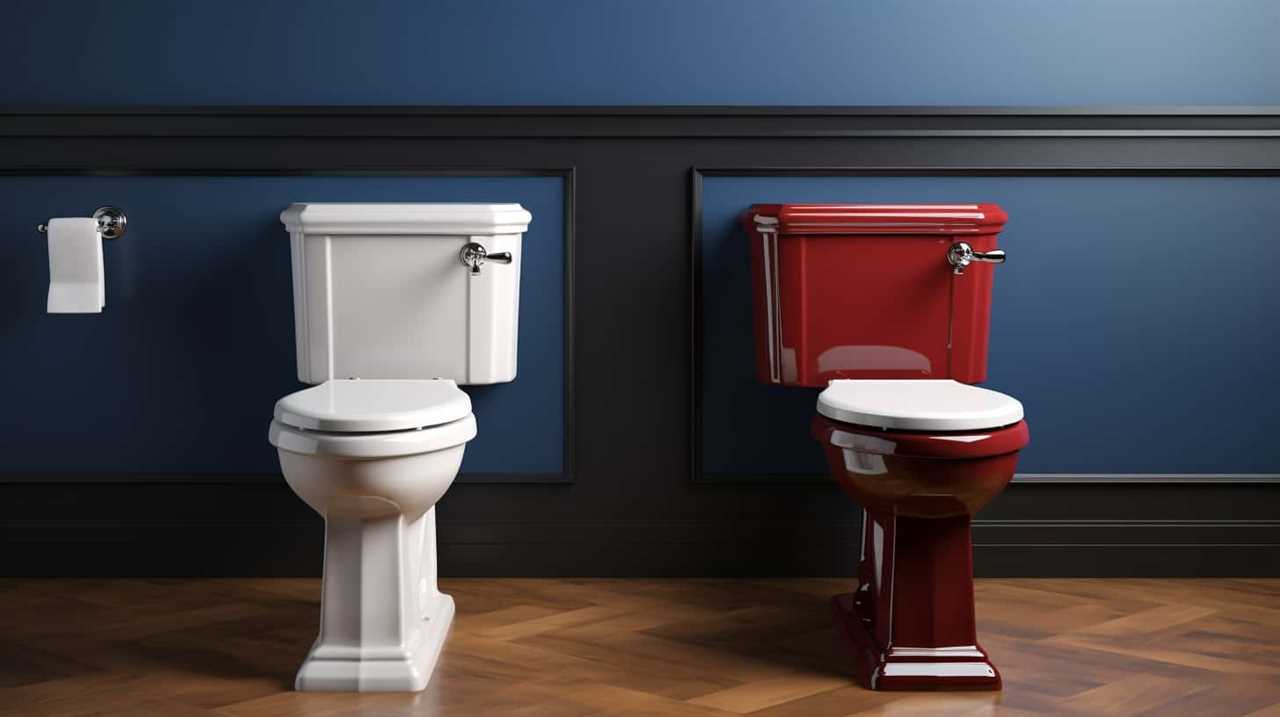
- Hot water and dish soap: Start by pouring a generous amount of dish soap into the toilet bowl. Follow it with a pot of hot (but not boiling) water. Let it sit for a few minutes, then flush. The combination of soap and hot water can help break down the clog and lubricate the pipes.
- Baking soda and vinegar: Sprinkle about a cup of baking soda into the toilet bowl, followed by a cup of vinegar. Let it fizz for a few minutes, then flush. The chemical reaction between the baking soda and vinegar can help dissolve the clog.
- Wire coat hanger: Straighten a wire coat hanger and create a small hook at one end. Insert the hooked end into the toilet drain and gently push and pull to dislodge the clog. Be careful not to cause any damage to the toilet bowl or pipes.
Frequently Asked Questions
Are Toilet Plungers Effective for Unclogging Sinks or Other Drains?
Toilet plungers are effective for unclogging sinks and drains. However, alternative methods like using a drain snake or baking soda and vinegar can also be used. When using a toilet plunger on dual flush or low flow toilets, be cautious to avoid damage.
Can a Toilet Plunger Damage the Toilet Bowl or Pipes?
A toilet plunger, though effective for unclogging sinks and drains, can potentially damage the toilet bowl or pipes if used forcefully. Regular replacement is recommended. Alternative methods for unclogging toilets include using a toilet auger or calling a professional plumber.
How Often Should Toilet Plungers Be Replaced?
Toilet plungers should be replaced when they show signs of wear and tear, such as cracks or frayed rubber. It is important to clean a toilet plunger properly after each use to maintain its effectiveness and prevent the spread of germs.
Are There Any Alternative Methods for Unclogging Toilets Without Using a Plunger?
There are alternative methods for unclogging toilets without using a plunger. For instance, using a toilet auger or a drain snake can effectively remove clogs. These plunger alternatives provide efficient and precise solutions for toilet blockages.
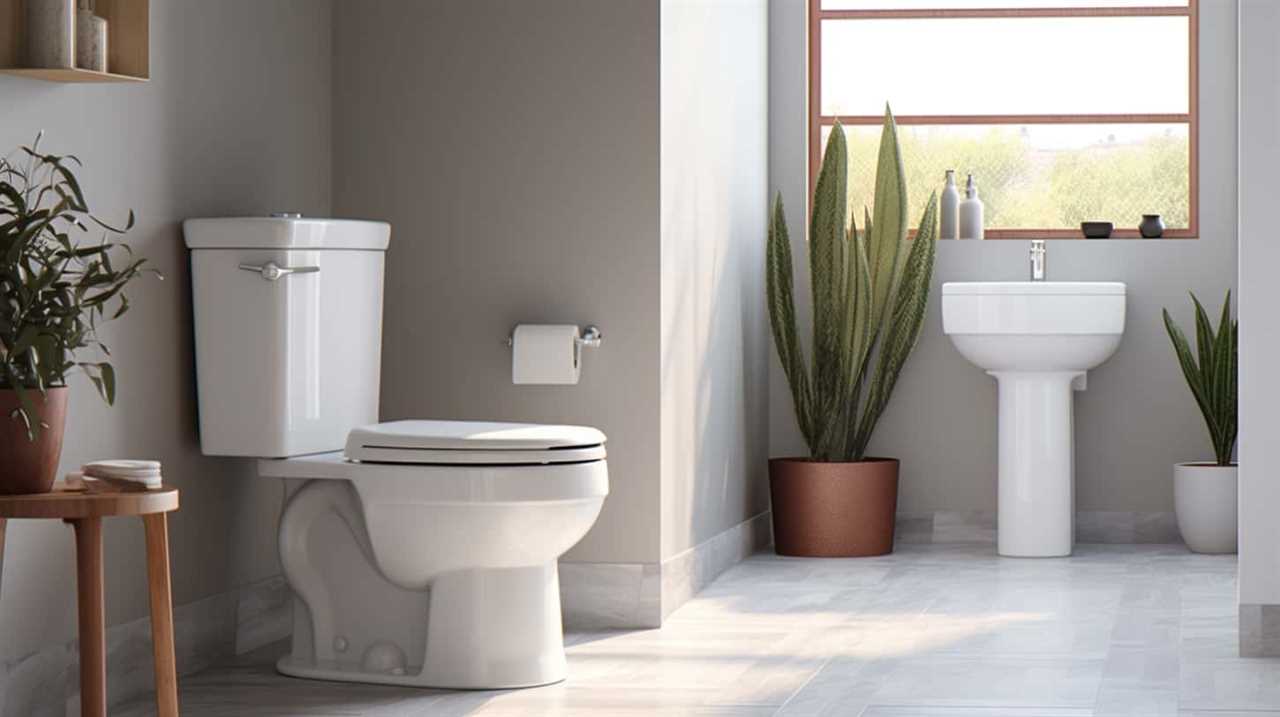
Can I Use a Toilet Plunger on a Dual-Flush or Low-Flow Toilet?
Yes, a toilet plunger can be used on dual-flush and low-flow toilets. It is important to use the plunger properly, applying enough force to create a strong suction and unclog the toilet effectively.
Conclusion
In conclusion, the toilet plunger is a powerful tool that can save you from the frustration and inconvenience of a clogged toilet. With its various types and a step-by-step guide on how to use it effectively, it becomes an essential item in every household.
By following the right techniques and avoiding common mistakes, you can quickly unclog your toilet and get back to your daily routine. Don’t let a clogged toilet ruin your day, let the toilet plunger be your trusty companion in times of need.



